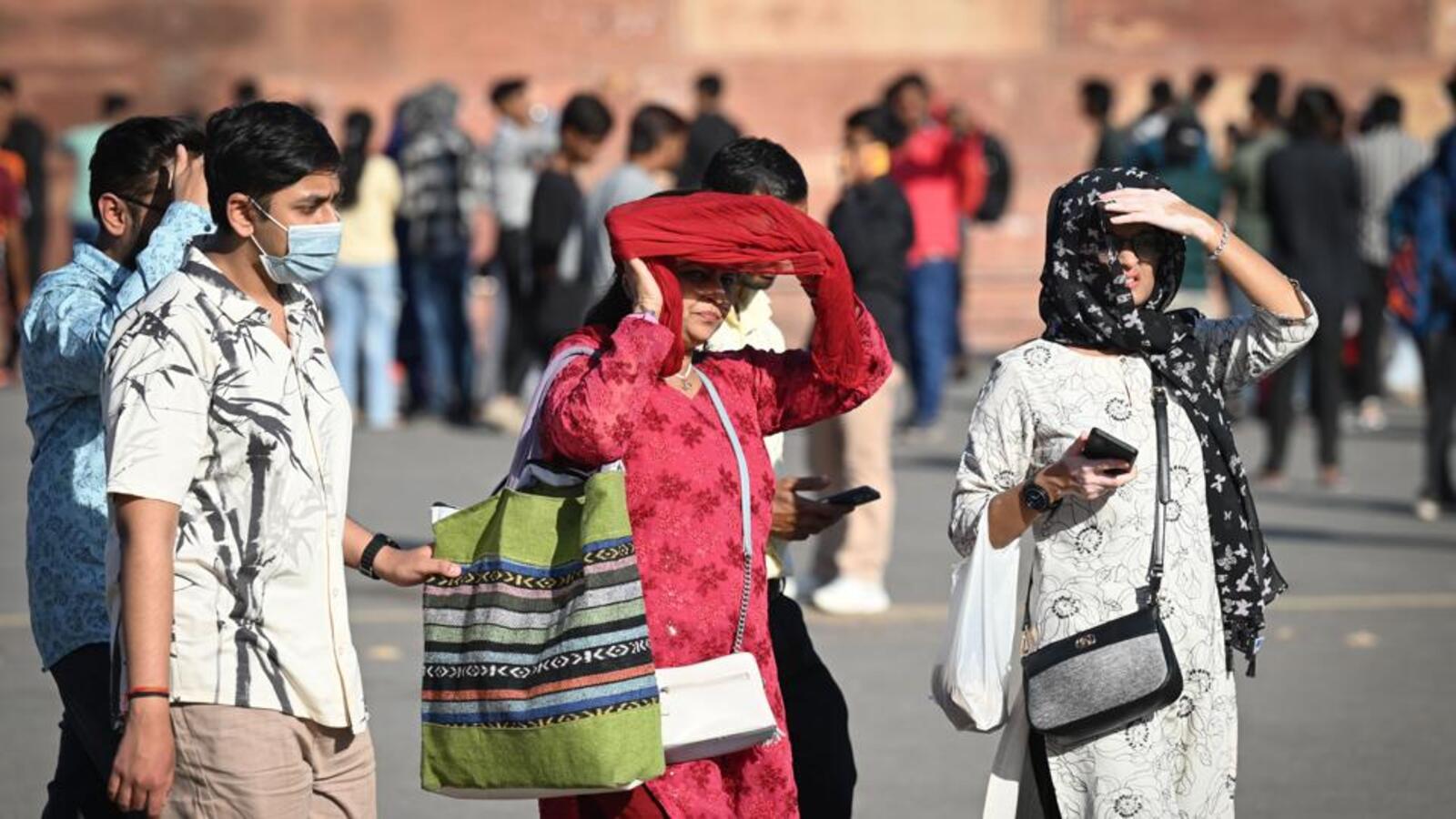Delhi’s maximum temperature may have dipped over the past few days, but it has still been a warmer-than-usual March, with the average monthly maximum temperature recorded over two degrees above normal, according to India Meteorological Department (IMD) data.

The monthly average maximum temperature as of Sunday was 32.2 degrees Celsius (°C), which is Delhi’s warmest since March 2022, when it was 33.4°C. The long-period average maximum for March is 29.9°C, officials said. The minimum temperature, meanwhile, was recorded at 15.6°C this month, the same as the long-period average (LPA), which is 15.6°C.
“Barring the past few days, where the maximum has dropped marginally, it has largely been above normal. There has not been considerable rain this month across Delhi-NCR, which has meant there has not been any cooling effect,” an IMD official said.
Delhi has so far recorded only 1.8mm of rainfall this month, against an average of 17.4mm of rainfall for March, making it a considerable deficit, according to previous years’ data.
Mahesh Palawat, vice president at Skymet, said March temperature has been following the trend of previous months, with western disturbances largely being feeble. “Although we have seen western disturbances, they have mainly impacted the mountains and not the plains. Only one western disturbance brought rain to Delhi, which has meant it has mostly been dry, with clear skies. This has raised mercury sharply, barring for the last few days, when strong cool winds have somewhat controlled the maximum,” said Palawat, adding that a similar trend could continue next month.
Delhi recorded its warmest day of the season on March 26, when the maximum touched 38.9°C. This was Delhi’s hottest March day since March 31, 2022, when it was 39.5°C.
Over the past decade, Delhi has seen March emerging as a particularly warm month, and practically, leading to spring vanishing. While March 2022 was the warmest March since 1901 (33.4°C), the average monthly maximum in March 2021 was 33.2°C and it was 32.8°C in 2018 — all warmer than this current March. “This shows that in recent years, March has become fairly warm,” Palawat said.
Clean air to persist amid mercury rise
Delhi’s AQI remained in the “moderate” category on Sunday, improving over the past 24 hours. It was recorded at 138 (“moderate”) at 4pm. In comparison, it was 153 (“moderate”) at the same time on Saturday.
Delhi’s maximum meanwhile stood at 32.8°C, which was around normal. It was 29.6°C on Saturday. Strong winds of 10-20 km/hr are expected during the day on Monday, and keep the maximum between 32°C and 34°C. A marginal increase in temperature to 35°C is likely on Tuesday and to 36°C on Wednesday as winds drop again, the IMD said.
This month, despite the hot and dry weather during the day, strong surface winds came to Delhi’s rescue, keeping the average air quality index (AQI) at 170 — the joint second-lowest in the Capital alongside March 2023, and the lowest since March 2020, a Covid-impacted year, when the AQI was 128. Experts said that a lack of western disturbances played a role in ensuring mostly clear skies over the plains, which induced heatwave conditions in parts of west and northwest India.
The average AQI until March 30 was 170. It was 176 in 2024, 170 in 2023, 217 in 2022, 223 in 2021, 128 in 2020, 184 in 2019, 203 in 2018, 211 in 2017 and 238 in 2016. The Central Pollution Control Board (CPCB) launched AQI in April 2015.
Referring to much cleaner air quality this month, Palawat said there have been strong and consistent winds on most days, which has helped disperse pollutants to a large extent. “We have seen a small spike when the wind speed has dipped. Largely, strong winds have helped disperse pollutants, even bringing satisfactory air,” Palawat said.
According to CPCB data, Delhi has recorded nine “poor” air days so far this month, in comparison to five last year and eight in 2023. There were 19 “poor” air days in March 2022. However, the AQI improved to 85 (“satisfactory”) on March 15, when a combination of strong winds and drizzle in the city brought the Capital its cleanest March day in two years, since it was 73 (“satisfactory”) on March 31, 2023. “Had winds not been strong, the absence of rain would have made it a much more polluted month,” Palawat said.
Forecasts by the Centre’s Early Warning System for Delhi show AQI should remain “moderate” in the region till at least April 2.









Leave a Reply